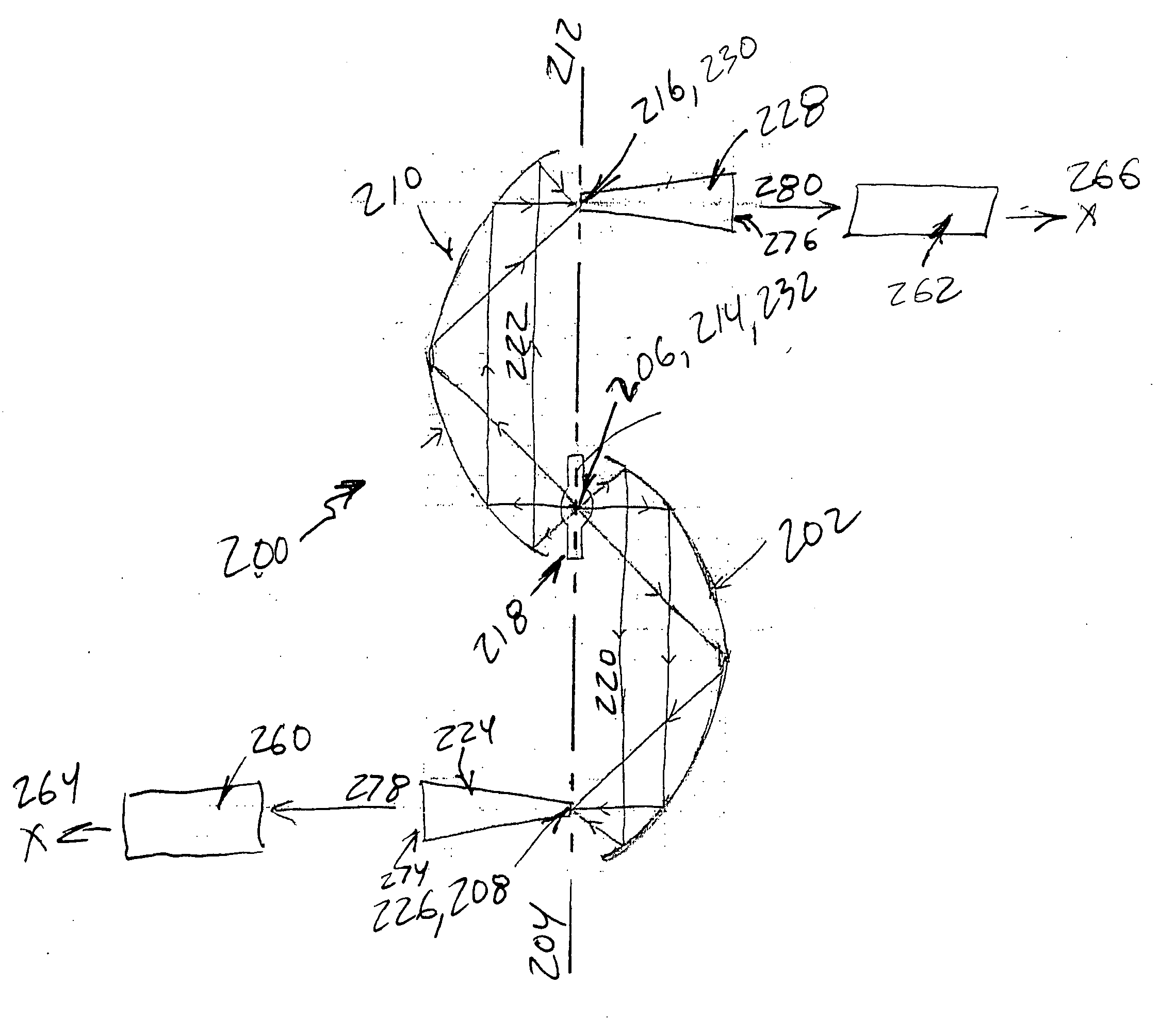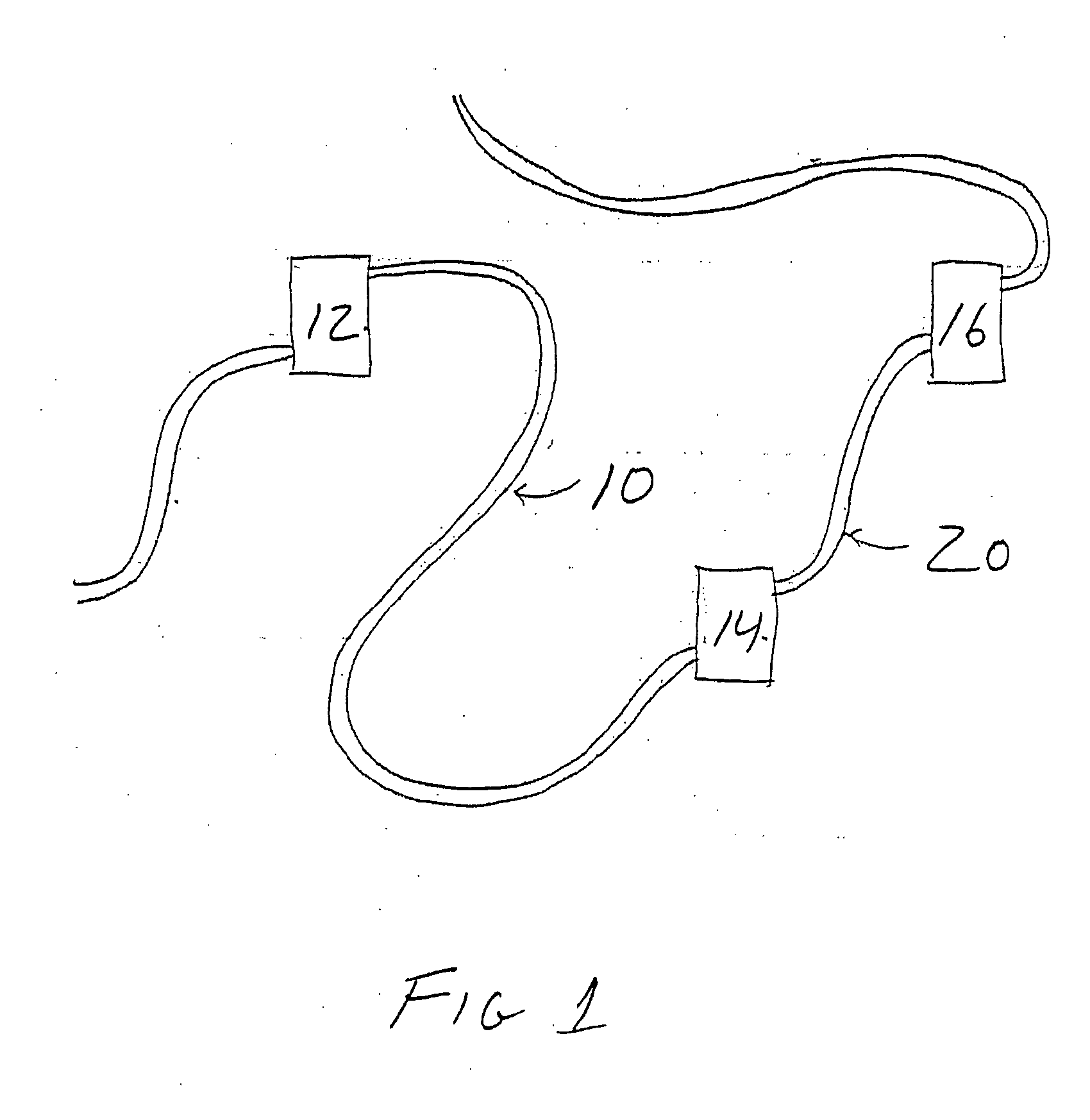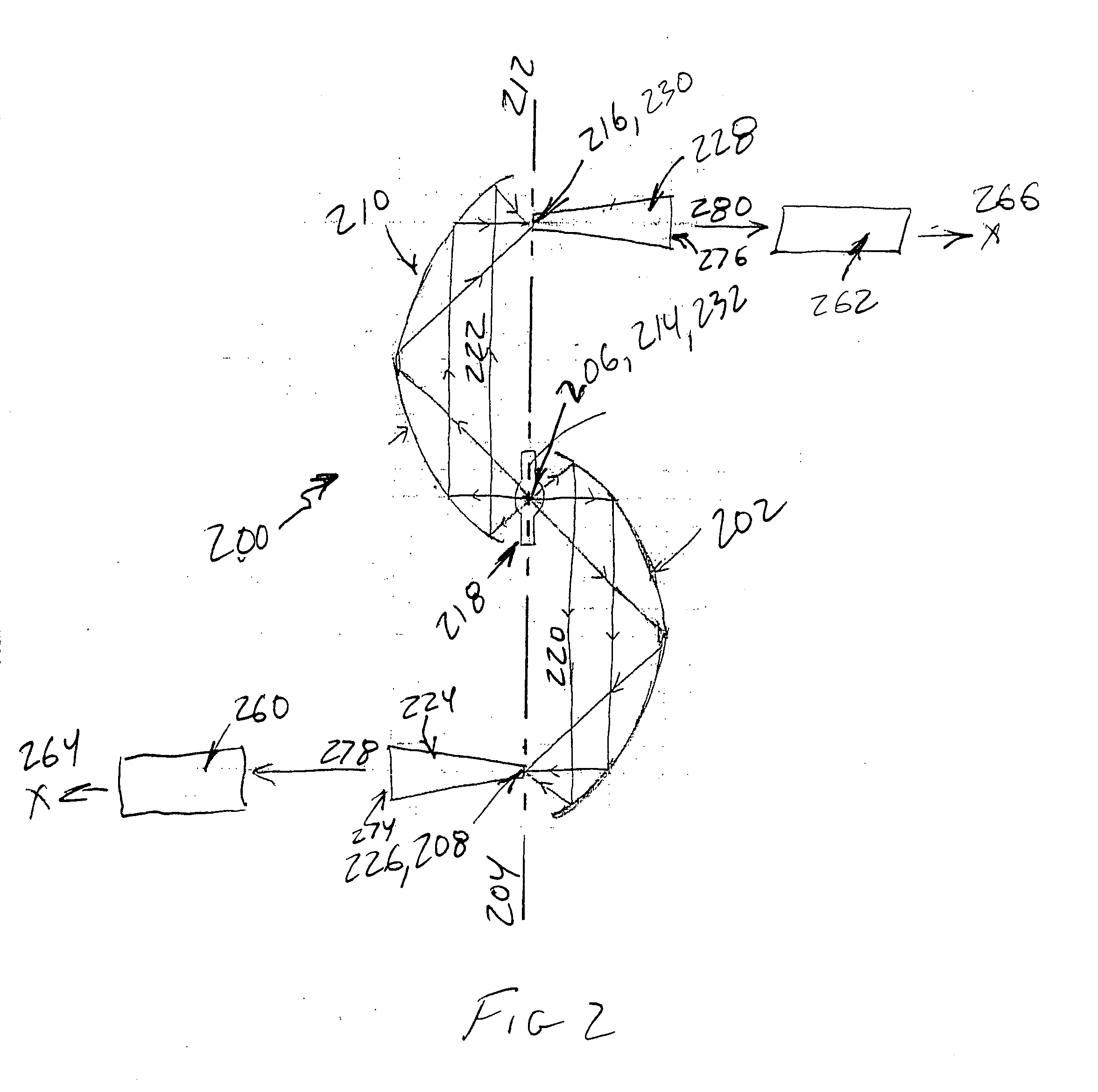Multiple output illumination using reflectors
- Summary
- Abstract
- Description
- Claims
- Application Information
AI Technical Summary
Problems solved by technology
Method used
Image
Examples
first embodiment
[0029] In FIG. 2 is shown a multiple output illumination system 200 according to the invention. Multiple output illumination system 200 may include first and second reflectors 202, 210. In one embodiment, first and second reflectors 202, 210 may have a coating that reflects only a pre-specified portion of electromagnetic radiation spectrum, such as visible light radiation, a pre-specified band of radiation, or a specific color of radiation.
[0030] First reflector 202 may have a first optical axis 204 and a first and second focal points 206, 208. First and second focal points 206, 208 may be substantially on first optical axis 204. Second reflector 210 may have a second optical axis 212 and a third and fourth focal points 214, 216. Third and fourth focal points 214, 216 may be substantially on second optical axis 212. Third focal point 214 may be substantially proximate to first focal point 206 while fourth focal point 216 may be substantially distal from second focal point 208. In va...
second embodiment
[0043] In FIG. 3 is shown a multiple output illumination system 300 according to the invention. Illumination system 300 includes a first, second and third reflectors 302, 310, 334 arranged substantially rotationally symmetrically about an axis of rotation 332. In one embodiment, first, second and third reflectors 302, 310, 334 may be approximately 120° from one another around axis of rotation 332.
[0044] First reflector 302 may have a first optical axis 304 and a first and second focal points 306, 308. First and second focal points 306, 308 may be substantially on first optical axis 304.
[0045] Second reflector 310 may have a second optical axis 312 and a third and fourth focal points 314, 316. Third and fourth focal points 314, 316 may be substantially on second optical axis 312. Third focal point 314 may be substantially proximate to first focal point 306 while fourth focal point 316 may be substantially distal from second focal point 308.
[0046] Third reflector 334 may have a thir...
eighth embodiment
[0069] In an eighth embodiment, a method for collecting electromagnetic radiation emitted by a source 618 of electromagnetic radiation and substantially focusing collected radiation onto a plurality of targets includes positioning source 618 of electromagnetic radiation substantially at a focal point 606, 614 of a first and second reflectors 602, 610, producing first and second rays of radiation 622 by source 618, reflecting first rays of radiation 620 by first reflector 602 substantially toward a third reflector 634 and reflecting second rays of radiation 622 by second reflector 610 substantially toward a fourth reflector 642, converging first rays of radiation 620 substantially at a focal point 608 of third reflector 634 and converging second rays of radiation 622 substantially at a focal point 616 of fourth reflector 642, positioning a first light pipe 624 may have a first input end 626 and a first output end 674 so that first input end 626 is substantially proximate to focal poi...
PUM
 Login to view more
Login to view more Abstract
Description
Claims
Application Information
 Login to view more
Login to view more - R&D Engineer
- R&D Manager
- IP Professional
- Industry Leading Data Capabilities
- Powerful AI technology
- Patent DNA Extraction
Browse by: Latest US Patents, China's latest patents, Technical Efficacy Thesaurus, Application Domain, Technology Topic.
© 2024 PatSnap. All rights reserved.Legal|Privacy policy|Modern Slavery Act Transparency Statement|Sitemap



